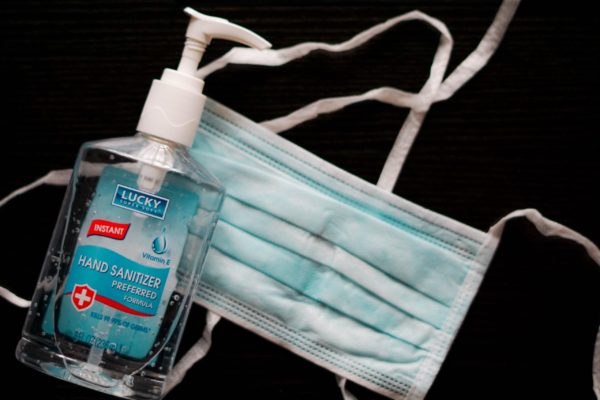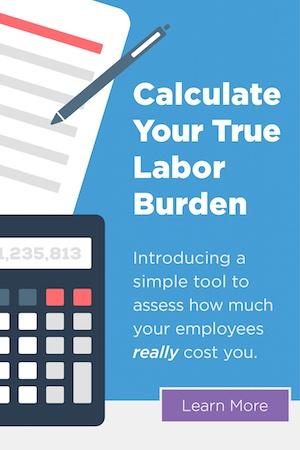A recent move by the federal workplace safety watchdog agency means that you should prepare for more COVID-19-related OSHA inspections this spring and summer. On March 12, the Occupational Safety and Health Administration (OSHA) adopted a National Emphasis Program (NEP) on COVID-19, effective immediately, which signals the agency will devote more resources towards virus-related inspections during the next several months. With the adoption of the NEP, OSHA likewise updated its Interim Enforcement Response Plan for COVID-19, detailing the specific steps OSHA inspectors and other agency personnel will take during inspections under the NEP. Given the increased resources OSHA will use under the NEP to enforce existing safety standards and the Occupational Safety and Health Act’s general requirement to maintain a workplace free from recognized hazards (also known as the general duty clause), you should follow a five-step plan now to prepare for a visit from OSHA.
What Will An OSHA Inspection Under The NEP Look Like?
Most OSHA inspections generally include an opening conference, document review and witness interviews, facility walkaround, and closing conference. The NEP provides specific parameters and guidance for each of these steps during inspection under the program, which are outlined below.
- Opening Conference. The NEP notes that inspections shall be conducted in a manner to assure the safety of OSHA Compliance Safety and Health Officers (CSHOs) and all personnel they come in close contact with during their inspections. When onsite, CSHOs will take additional precautions as necessary, such as requesting to conduct opening conferences in a designated, uncontaminated administrative area or outdoors, and always wearing face coverings and necessary PPE. As appropriate, CSHOs should speak to the safety director, infection control director, and/or the person responsible for implementing COVID-19 protections or occupational health hazard control. Other individuals responsible for providing records pertinent to the inspection should also be included in the opening conference or interviewed early in the inspection (e.g., facility administrator, training director, facilities engineer, director of nursing, human resources). Also, employee representatives, e.g., union officials, may accompany CSHOs during the inspection.
- Document Review. CSHOs will review employers’ written safety and health plan that includes contingency planning for emergencies and natural disasters, such as the current pandemic; facility’s procedures for hazard assessment and protocols for PPE use; documentation showing employer’s purchase of PPE; determine whether measures to facilitate physical distancing have been implemented; the employee’s respiratory protection program and policies; review medical records related to worker exposure incident(s); and review employee training records.
- Walkaround. Based on information from the program and document review and interviews, CSHOs and supervisors or Area Directors should determine what areas of a facility will be inspected (e.g., emergency rooms, respiratory therapy areas, bronchoscopy suites, and morgue in a hospital; kill floor, meat packing floor, locker room in a meat processing facility; assembly line in a manufacturing plant). The CSHOs will then walkthrough those areas of the worksite, looking for hazards and violations.
- Applicable OSHA Standards. The NEP notes that several OSHA standards may apply during an inspection under the program, depending on the circumstances of the case. It also notes, importantly, that, in the event that OSHA issues an emergency temporary standard (ETS), pursuant to the Presidential Executive Order on Protecting Worker Health and Safety, January 21, 2021, citation guidance will be updated. OSHA notes that the list of general industry standards applicable to infectious diseases, such as COVID-19, include the following:
- 29 CFR Part 1904, Recording and Reporting Occupational Injuries and Illness.
- 29 CFR § 1910.132, General Requirements-Personal Protective Equipment.
- 29 CFR § 1910.134, Respiratory Protection. – 29 CFR § 1910.141, Sanitation.
- 29 CFR § 1910.145, Specification for Accident Prevention Signs and Tags.
- 29 CFR § 1910.1020, Access to Employee Exposure and Medical Records.
- Section 5(a)(1), General Duty Clause of the OSH Act.
- 29 CFR § 1910.1030, Bloodborne Pathogens (BBP).
- Injury/Illness Records. CSHOs will review the employer’s injury and illness records to identify any workers with recorded illnesses or symptoms associated with exposure(s) to persons with suspected or confirmed COVID-19 or other sources of COVID-19. Specifically, the CSHO will examine the company’s OSHA 300 logs to determine if COVID-19 cases, when work-related, were properly recorded.
How to Prepare For A COVID-19 NEP Inspection In Your Workplace
There are five steps you can take to prepare for a potential COVID-19 inspection.
- Adopt A Written COVID-19 Policy
When OSHA arrives for an inspection under the NEP, it will ask for your written COVID-19 protocols and response plan. If you haven’t already, begin to formalize your COVID-19 workplace policies in written form. Having written materials makes training employees on your policies easier and more effective. - Train Employees On Existing COVID-19 Policies
OSHA’s next area of inquiry will focus on how your COVID-19 protocol has been communicated to employees. Begin training employees now on any COVID-19 policies you have in place, whether verbally or in writing. Communicating with employees regarding the measures you have taken to keep them safe will not only help with handling an OSHA inspection, but also ease any concerns employees may have about their potential exposure to COVID-19. - Consistently Clean And Disinfect Your Workplace
Optics are crucial during any OSHA inspection. If the OSHA inspector sees poor housekeeping upon arrival at your facility, they will view your workplace in a negative light. Cleaning and disinfecting your workplace is never a bad thing, either during or after a pandemic. If you have increased your facility’s cleaning schedule during the pandemic, maintain the current number of cleanings. To protect your employees, ensure commonly touched surfaces such as door knobs, buttons, restrooms, and break rooms are frequently cleaned and sanitized. If using cleaners other than household cleaners with more frequency or at a strength greater than an employee would use at home, ensure workers are trained on the hazards of the cleaning chemicals used in the workplace and maintain a written program in accordance with OSHA’s Hazard Communication standard. - Practice Social Distancing
The lack of proper spacing between employees will be easily discernable during any OSHA inspection. If the inspector sees employees working closely together, they view such positioning as a hazard. Throughout the pandemic, the CDC has encouraged all people to practice social or physical distancing in order to prevent spreading COVID-19. To the extent possible, have employees work from home, and stagger shift start times, lunch breaks, and other times when employees will be in your facility in order to cut down on the number of individuals at the worksite. Limit capacity in conference rooms, break rooms, offices, and restrooms. Mark hallways and corridors as one way to limit “head-on” pedestrian traffic. Work with your landlord or HVAC contractor to increase the number of air exchanges at your facility and install air filters where possible. Taking these actions will both decrease the number of close contact between people at your facility and help filter the air in your work environment. - Ensure the Safety of the OSHA Inspector
Throughout the inspection, ensure the OSHA inspector is provided the correct personal protective equipment, such as face coverings, goggles, or other items to keep them safe. Provide a quick training session to them on your COVID-19 safety protocols. This will likely impress the inspector. We all share the mission of keeping employees safe and demonstrating that you care about the safety of the OSHA inspector will help build a rapport with the agency during the inspection.
Conclusion
The COVID-19 pandemic is not over, and OSHA is making a push to conduct additional inspections concerning the coronavirus in the next several months. Take steps now to improve worker safety as you continue to bring more employees back to the workplace in the coming months. This will not only create a safer workplace, but also prepare you for an OSHA inspection under the safety agency’s new COVID-19 emphasis program. This is a constantly evolving area. Keep up to date as additional information becomes available.
Excerpts from March 15,2021 article by Fisher-Phillips
This communication is for informational purposes only; it is not legal, tax or accounting advice; and should not be acted upon as such. This post may contain hyperlinks to forms, materials, and websites operated by parties other than UniqueHR. Such hyperlinks are provided for reference only. UniqueHR does not control such websites and is not responsible for their content.


